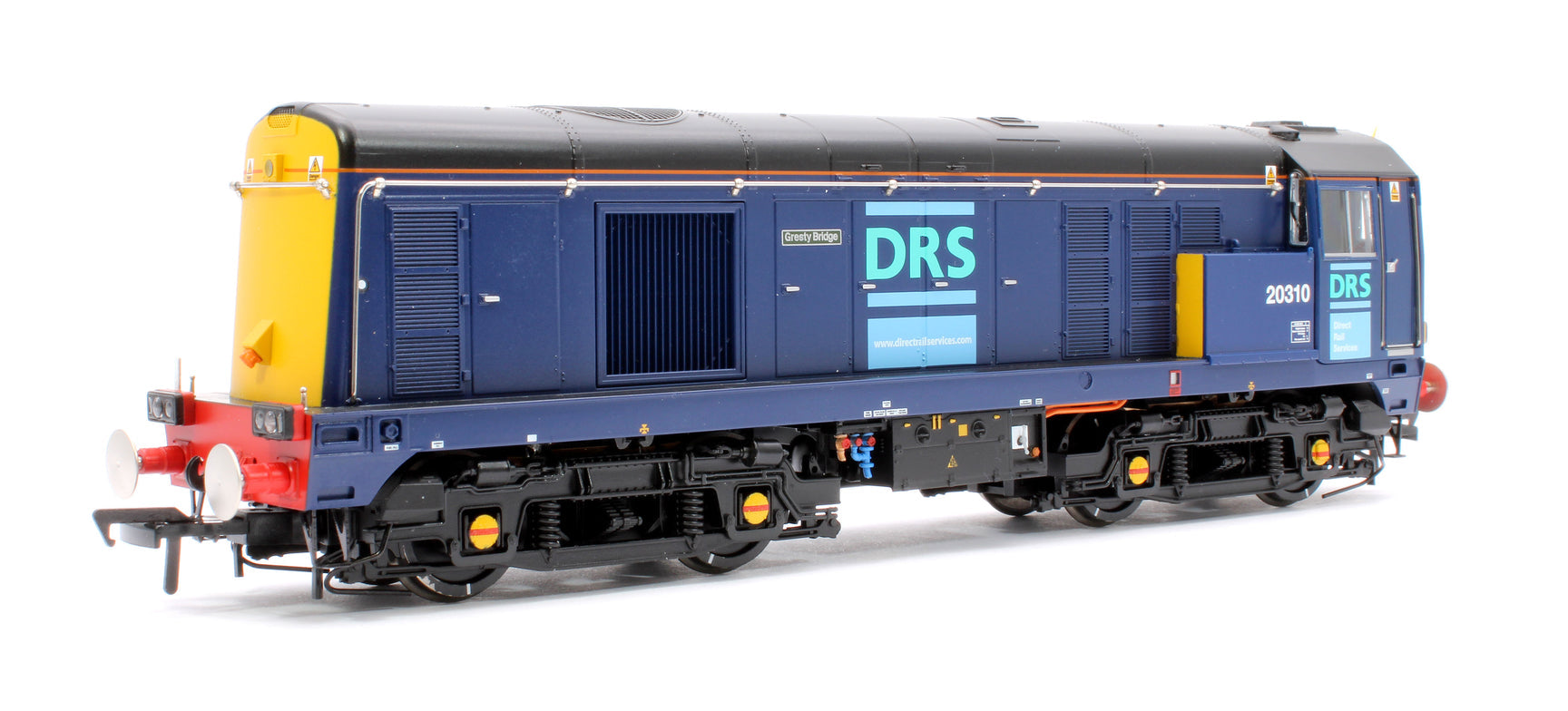Bachmann’s latest range of OO gauge Class 20 locomotives cover a huge variety of subclasses, detail variations and livery options. There really is something for most layouts in the range, with all manner of eras catered for.
We have just received a new batch of these super detailed diesels in stock covering 20/3 subclass locomotives in the modern Direct Rail Services colour scheme.
Latest Releases
Other Models In Stock
Product Features:
Highly detailed model with many separately fitted parts including handrails, lamp irons, etched metal grilles, pipework, underframe relief and much more
Plux22 DCC decoder interface with pre fitted sound speaker (Factory sound fitted models available)
Five pole, twin shaft motor with two flywheels providing drive to all wheels, with all-wheel pickups
Separate metal bearings fitted to each axle
Diecast metal chassis block and bogie towers
Diecast metal gearboxes, with gearing arranged for prototypical running speeds and haulage capabilities
16.5mm (OO gauge) wheels to NEM310 & NEM311 standards with authentic profile and detailing
Detachable coupling pockets to NEM362 standards fitted to each bogie
Rotating radiator fan (un-motorised)
Each model supplied with a full set of decorated, model-specific bufferbeam pipework and accessory parts
Comprehensive lighting package with directional lights, Day/ Night modes and Cab lighting (all switchable/ selectable on DC or DCC)
Authentic liveries applied to all models. Multiple paint applications employed on each model using BR and corporate specification colours
Etched Nameplates and Plaques are also provided
Prototype Information
The Class 20s (Also known as English Electric Type 1s) were produced by English Electric as part of the pilot scheme of new diesel locomotives for British Rail. They were designed around relatively basic technology to provide motive power on a range of light freight workings, although on rare occasions some did work on passenger services.
Their single cab design led to some visibility problems, so they often operated in pairs with the cabs leading at either end. Remarkably, a number of the class are still in use on the mainline to this day, a testament to the robustness of this classic design.



